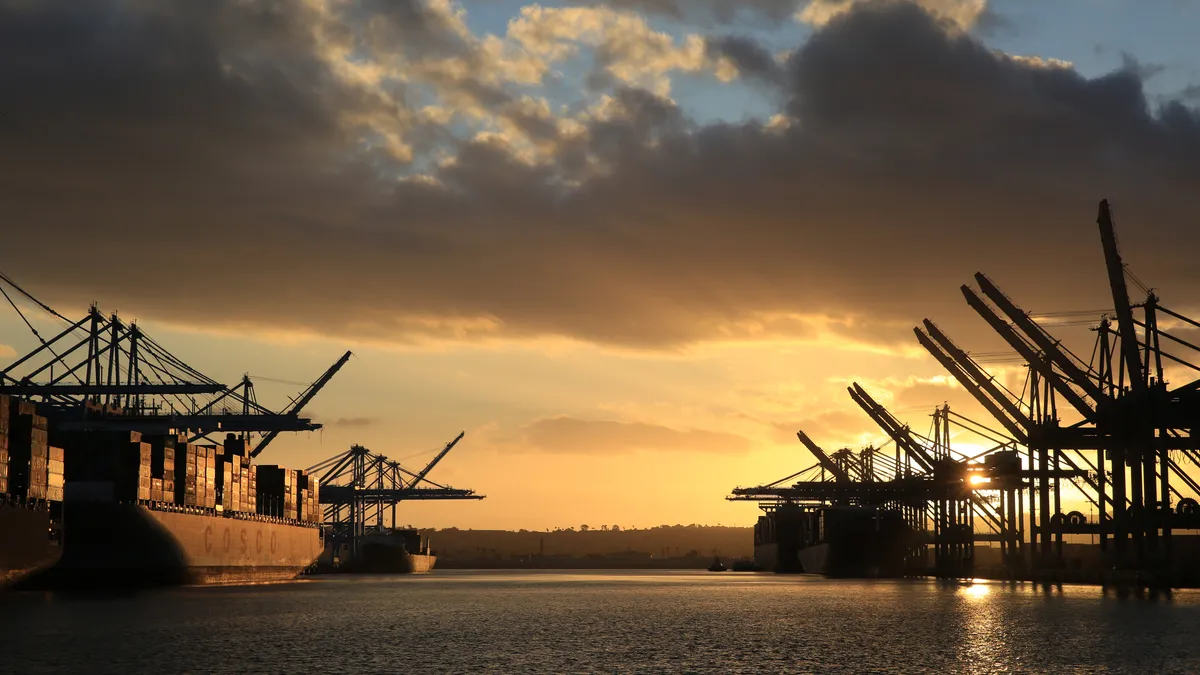Dive Brief:
- The Port of Los Angeles is expanding its suite of data tools available to carriers and shippers with the rollout of the Control Tower, which will include information on rail performance and truck movement in the gateway, Port of Los Angeles Executive Director Gene Seroka said at the State of the Port event last week.
- The first phase of the new application is expected to go live by the middle of February, Seroka said in a follow-up interview.
- The application will provide more information on dual transactions at port facilities; increasing the rate of these transactions has become a priority for the port. It will also show export information, on which previous applications have not given data.
Dive Insight:
West Coast ports, including the Port of Los Angeles, have been dealing with elevated volumes for months that have congested port facilities, increased container dwell time and resulted in a line of ships waiting to dock.
Volume for the week of Jan. 24 through Jan. 30 is forecast to be up 160% YoY, according to the port's estimates.
"For our gateway to routinely handle that volume of cargo in the future, we will need everyone in this complex to participate in our digital system of systems," Seroka said during last week's event. "Data is a critical resource right now."
The information in the Control Tower is meant to provide cargo owners a window into how their service providers are performing while highlighting areas of improvement for carriers, Seroka said.
The new tool is being made available as the port is working to incentivize dual transactions at terminals. The truck community has been advocating for this as a way to improve congestion for months.
On Tuesday, the Port of Los Angeles is expected to announce its monthly incentive program for terminals that increase truck productivity. The effort was recently approved by the Harbor Commission.
The program will pay terminals between 50 cents and $2.75 per TEU for improving truck turn times by 5% to 20% — the sliding scale increases as terminals improve times. It will also pay terminals between 40 cents and $1.40 per loaded TEU, when their rate of dual transactions is at least 50%. The incentive program is set to begin Feb. 1.
The information provided by the Control Tower will provide a snapshot of the key performance indicators being measured in the incentive program.
"My ambition is to have a real-time look at how those little transactions are doing," Seroka said.
The port estimated that the first year of the program will cost $7.5 million. Terminals that want to participate have to opt in and share data through the facility's Port Optimizer tools.
Seroka has said that increasing the use of this tool among supply chain partners will be an important part of improving operations. Some companies have worried that sharing data with the port will result in its information being sold, but Seroka said data has never been sold and legal agreements prevent the port from sharing any proprietary information.
"As we look toward mandates, that's a possibility," he said, when asked about getting partners to use data tools. "But I'd rather incent people to [adopt the Port Optimizer]. It's new. It's the only port community system in the nation that really is as robust as the Port Optimizer is ... I'm hopeful that folks will realize that we are good stewards of that data."














